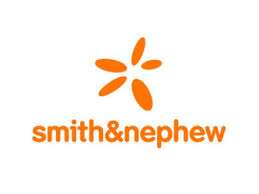HEAD OF IT
Smith & Nephew is a leading portfolio medical technology company, operating in around 100 countries globally. There are a constituent of the UK’s FTSE100 and our shares are traded on the London Stock Exchange and through American Depository Receipts on the New York Stock Exchange (LSE: SN, NYSE: SNN).
Orthopaedics includes an innovative range of Hip and Knee Implants used to replace diseased, damaged or worn joints and Trauma products used to stabilise severe fractures and correct bone deformities.
Our Sports Medicine and Ear, Nose and Throat (ENT) businesses offer advanced products and instruments used to repair or remove soft tissue. They operate in growing markets where unmet clinical needs provide opportunities for procedural and technological innovation.
Our Advanced Wound Management portfolio provides a comprehensive set of products to meet broad and complex clinical needs, to help healthcare professionals get CLOSER TO ZERO human and economic consequences of wounds.
Responsible for technology for technology in Orthopaedics across Europe, the Middle East and Africa. Responsible for around 10 Projects simultaneously via Matrix management with budgets per project between £3.5m and £21.5m managing 5 people directly and up to 65 indirectly.
KEY ACHIEVEMENTS
- SAP (ERP) implementations across Europe, the Middle East and Africa
- Setting Architecture processes
- Defining strategic and tactical IT planning
- Building Teams
I was the Head of Information Technology for providing technical direction and leadership with technology platforms and processes.
I provided specific technical project & programme management skills in the areas of Infrastructure, SAP (ERP) implementations Order, Inventory, Materials Management, Finance and Supply Chain management and BI (SAP MM, FL & CO), Operations, Data, Applications, Security, and Business Process Architecture. I manage the overall architecture process for Orthopaedics (GBU) in the UK, Europe, Middle East and South Africa, coordinate future architecture direction and transition plans from the legacy environments to the SAP system (ERP), provide architecture governance, recruitment, administer the IT architecture compliance/variance process, and maintain the architectural blueprints within the architecture repository.
I was responsible for strategic and tactical IT planning and financial administration for IT in Orthopaedics in EMEA. I was also responsible for planning, designing, implementing, and maintaining the local area computer networks of and the wide area voice and data communication networks for Orthopaedics in EMEA and for the design and development of PC workstations and standards for hardware and software. This was ensure that the infrastructure would fit for purpose and supported the new ERP environment.
I have developed strategies and plans to support long-term and short term business objectives by organising and scheduling resources across multiple projects (Project portfolio), and technologies to effectively achieve these.
These strategies and plans have created high levels of proficiency with the business process, data, and technical models and technology directions of the company. This has shaped communications with other Smith & Nephew organizations, to explore common development and ensure the exchange of expertise.
My mains aims have been to:
- Reduce complexities with the current environment
- Promote controls and standards
- Enforcec ommon methods and accountabilities
- Is less expensive to operate and enhance, reduces time to deliver
- Minimize the need to repeatedly review Architecture decisions
These aims help to ensure that architecture decisions are business driven and cost effective.
I have defined and managed the current state architecture blueprint, including business and enterprise process models, information models and the enabling application and technology portfolio.
I have collaborated with the business, this was made up of General Managers/Directors/VPs of different divisions, sectors and regions (Global, Regional and Local priorities) to provide ongoing, comprehensive communications as to the architecture direction, timetables and service level agreements, and work closely with management to determine requirements, Primary impacts, resolve changes, managing risk (M_O_R) and coordinate changes by communicating regularly with executive management and other customers, and negotiating and working with vendors and outside contractors.
I am continuously seeking opportunities to improve service and productivity and reduce costs to the business through monitoring and controlling departmental performance, managing to meet schedules and deadlines and administering the department’s expenses within budget guidelines. The current Infrastructure operation budget is £1.8m. I am also familiar with SOX compliance (Sarbanes-Oxley), FDA regulations and European regulations (Medical Devices).
I have directed, managed and coordinated support of IT development and of projects in other parts of the business providing programme (MSP), project Management (PRINCE 2), technical expertise, and direction and implementation assistance across the EMEA but mainly focusing in the Middle East (UAE Kuwait, Qatar, Bahrain, Jordan, Lebanon and Saudi).
I understand, appreciate and enjoy the differences in culture/working practises and life across the EMEA, USA & south East Asia and the way various cultures negotiate business decisions. Responsible for around 10 Projects simultaneously via Matrix management with budgets per project between £3.5m and £21.5m managing 5 people directly and up to 65 indirectly.
I was a key stakeholder and director in the selection, design, acquisition, implementation and support of the Local Area Networks and Wide Area Network to provide optimum availability and reliability. Developing cost effective solutions by using best practice framework such as ITIL, ITAC and GAMP which ensures data integrity, and manages capacity to ensure performance service levels are met.
In 2006 we had “Follow Me printing” and “Scan to Email /Folder” across the EMEA region, normal everyday requirements in 2019, however in 2006 most people had never seen or used that type of feature.

